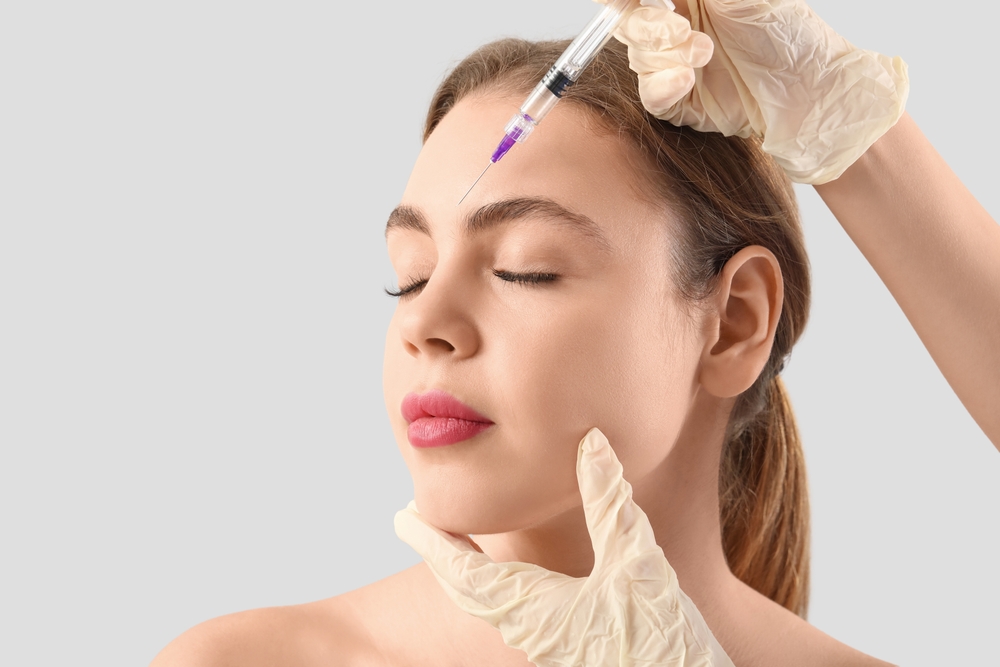
Forehead fillers involve injecting dermal fillers like hyaluronic acid under the skin. Forehead fillers help achieve a younger and smoother appearance.
Forehead fillers are a cosmetic treatment designed to reduce wrinkles and fine lines on the forehead. This treatment involves injecting dermal fillers such as hyaluronic acid under the skin. Forehead fillers help achieve a younger and smoother appearance by filling in the gaps under the skin and tightening the skin tissue.
The primary purpose of this procedure is to reduce wrinkles and fine lines on the forehead and give the skin a more youthful and smooth appearance. Forehead fillers alleviate signs of aging and restore lost volume in the skin. This treatment provides both aesthetic and psychological benefits, enhancing self-confidence and overall quality of life.
Forehead fillers may not be suitable for the following individuals:
The process of applying forehead fillers is usually done under local anesthesia. During the procedure, dermal fillers like hyaluronic acid are injected under the wrinkles and fine lines on the forehead using fine needles. The fillers work by filling the gaps under the skin and tightening the skin tissue.
The procedure generally takes 30-60 minutes, and patients can return to their normal activities the same day. After the procedure, some redness, swelling, and sensitivity may occur, which typically subsides within a few days. Patients should follow their doctor’s aftercare instructions and keep their skin clean.
One of the major advantages of forehead fillers is that they provide quick and effective results. This treatment reduces wrinkles and fine lines on the forehead, giving the skin a younger and smoother appearance. Forehead fillers are minimally invasive, usually painless, and have a short recovery time. Additionally, since hyaluronic acid is a naturally occurring substance in the body, the risk of allergic reactions is low.
However, there are some risks and complications associated with forehead fillers. After the procedure, mild redness, swelling, and bruising may occur, typically resolving within a few days. Additionally, if the injection is done incorrectly, asymmetry or irregularities can occur. Patients should be well-informed about the advantages and risks of forehead fillers and thoroughly consider all possibilities before starting treatment. Forehead fillers are generally safe and effective when performed by an experienced and skilled doctor.
The recovery process following forehead fillers requires careful aftercare and adherence to doctor’s instructions. In the first few days after the procedure, patients may experience mild redness, swelling, and sensitivity in the forehead area. These symptoms usually subside within a few days. Patients should follow their doctor’s aftercare instructions and keep their skin clean.
During the recovery period, it is important to avoid strenuous physical activities and sleeping face down. Additionally, pressure should be avoided on the injection area to prevent displacement of the fillers. Patients should use sunscreen to protect their skin from the harmful effects of the sun. Regular doctor check-ups following forehead fillers are critical to evaluate the success of the treatment and detect any potential complications early. For more information on forehead fillers and pricing, contact EMPCLINICS.
Yes, to maintain the results of forehead fillers, regular follow-up treatments may be necessary. Your doctor will create a treatment plan based on your needs.
Most patients experience minimal discomfort during the procedure. The use of anesthetics minimizes pain. Some sensitivity may occur after the procedure.
Generally, specific tests are not necessary, but your doctor may assess your medical history and allergy status. If needed, blood tests or skin tests may be conducted.